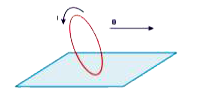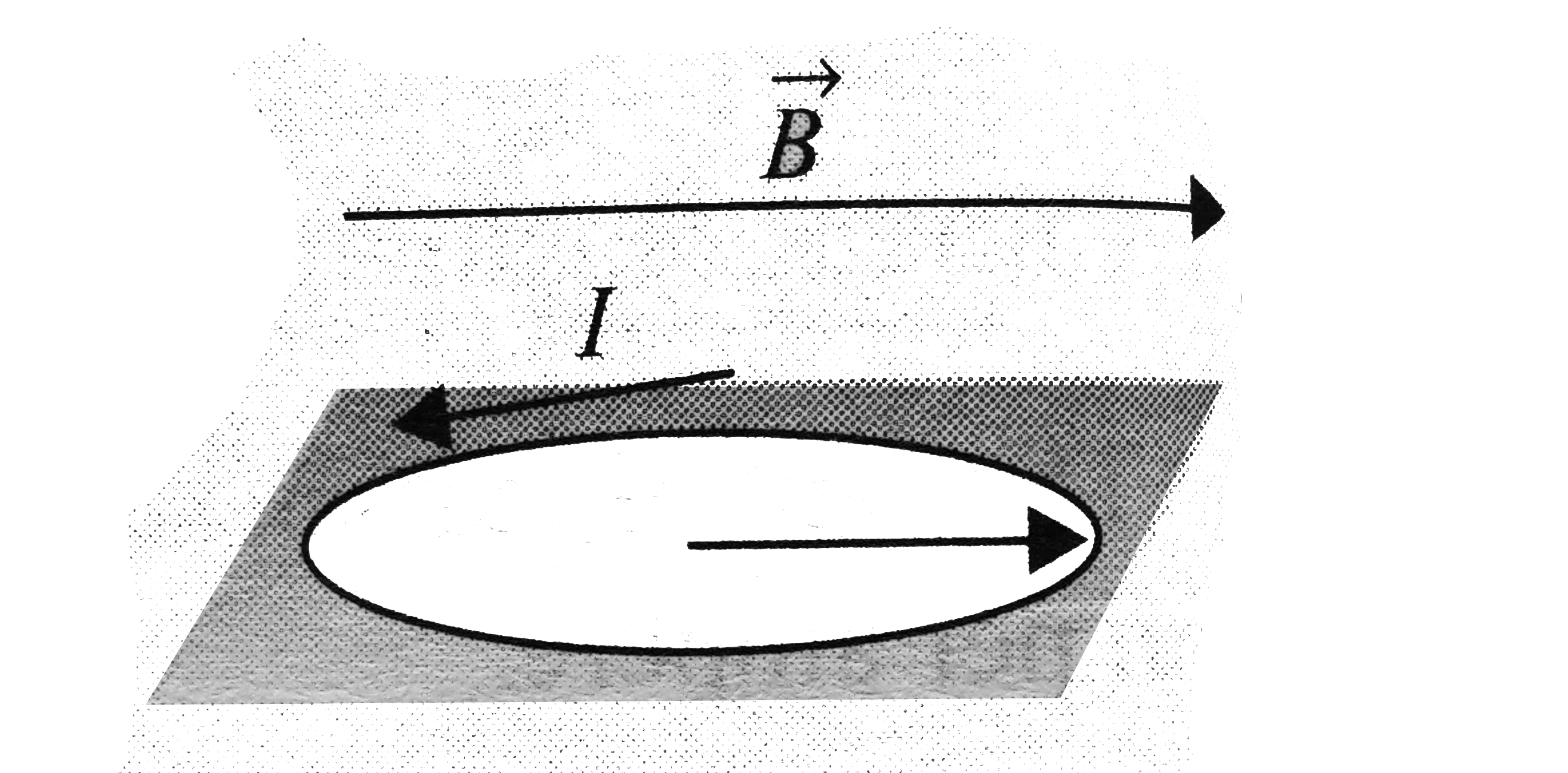Consider a circular wire loop of radius R, mass m kept at rest on a rough surface. Let I be the current flowing through the loop and →B be the magnetic field acting along horizontal as shown in Figure. Estimate the current I that should be applied so that one edge of the loop is lifted off the surface?


When the current is passed through the loop, the torque is produced. If the torque acting on the loop is increased then the loop will start to rotate. The loop will start to lift if and only if the magnitude of magnetic torque due to current applied equals to the gravitational torque as shown in Figure
τmagnetic=τgravitational
IAB=mgR
But pm=IA=I(πR2)
πIR2B=mgR
⇒I=mgπRB
The current estimated using this equation should be applied so that one edge of loop is lifted of the surface.
Topper's Solved these Questions
- BOOK - NCERT TAMILCHAPTER - MAGNETISM AND MAGNETIC EFFECTS OF ELECTRIC CURRENTEXERCISE - EVALUATION (I Multiple choice questions)15videos
MAGNETISM AND MAGNETIC EFFECTS OF ELECTRIC CURRENT
- BOOK - NCERT TAMILCHAPTER - MAGNETISM AND MAGNETIC EFFECTS OF ELECTRIC CURRENTEXERCISE - EVALUATION (IV. Numerical problems)10videos
MAGNETISM AND MAGNETIC EFFECTS OF ELECTRIC CURRENT
- BOOK - NCERT TAMILCHAPTER - ELECTROSTATICSEXERCISE - Exercises23videos
ELECTROSTATICS
- BOOK - NCERT TAMILCHAPTER - MAGNETISM AND MATTEREXERCISE - Additional Exercises19videos
MAGNETISM AND MATTER
Similar Questions
Consider a circular loop of wire lying in the plane of the table. Let the current pass through the loop clockwise. Apply the right hand rule out the direction of magnetic field inside and outside the loop.
View SolutionConsider a circular loop of wire lying in the plane of the table. Let the current pass through the loop clockwise. Apply the right-hand rule to find out the direction of the magnetic field inside and outside the loop.
View Solution
Knowledge Check
- Question 1 - Select One
To produce a magnetic field of π tesla at the centre of circular loop of diameter 1 m, the current flowing through loop is :
A5×106AB107AC2.5×106AD2×106A - Question 2 - Select One
A circular loop of radius R is kept in a uniform magnetic field pointing perpendicular into the plane of paper. When a current l flows in the loop, the tension produced in the loop is
 ABiRBBIR2C2BIRDZero
ABiRBBIR2C2BIRDZero
Consider a circular loop of wire lying in the plane of the table. Let the current pass through the loop clockwise. Apply the right-hand rule to find out the direction of the magnetic field inside and outside the loop.
 View Solution
View SolutionConsider a circular loop of wire lying in the plane of the table. Let the current pass through the loop clockwise. Apply the right-hand rule to find out the direction of the magnetic field inside and outside the loop.
View SolutionA circular wire loop of radius R, mass m carrying current I lies on a rough surface (as shown in Fig. 1.86). There is a horizontal magnetic field →B. How large can the current I be before one edge of the loop will lift off the surface?
 View Solution
View SolutionA circular wire loop of radius R, mass m carrying current I lies on a rough surface (as shown in Fig. 1.86). There is a horizontal magnetic field →B. How large can the current I be before one edge of the loop will lift off the surface?
 View Solution
View SolutionA circular loop of radius R is kept in a uniform magnetic field pointing perpendicular into the plane of paper. When a current l flows in the loop, the tension produced in the loop is
 View Solution
View SolutionA copper wire of length 7 metre is bent to form a circular loop. If i current flows through the loop, find out the magnitude of magnetic moment of the loop.
View Solution
